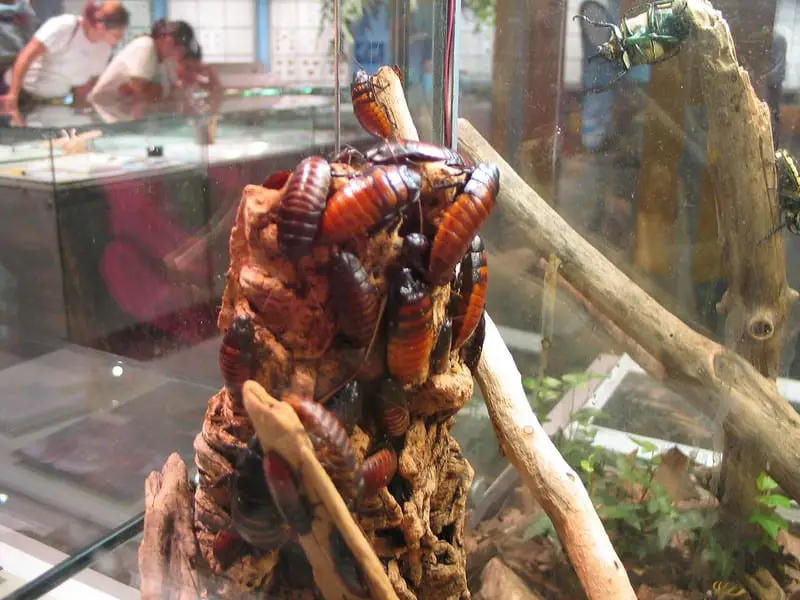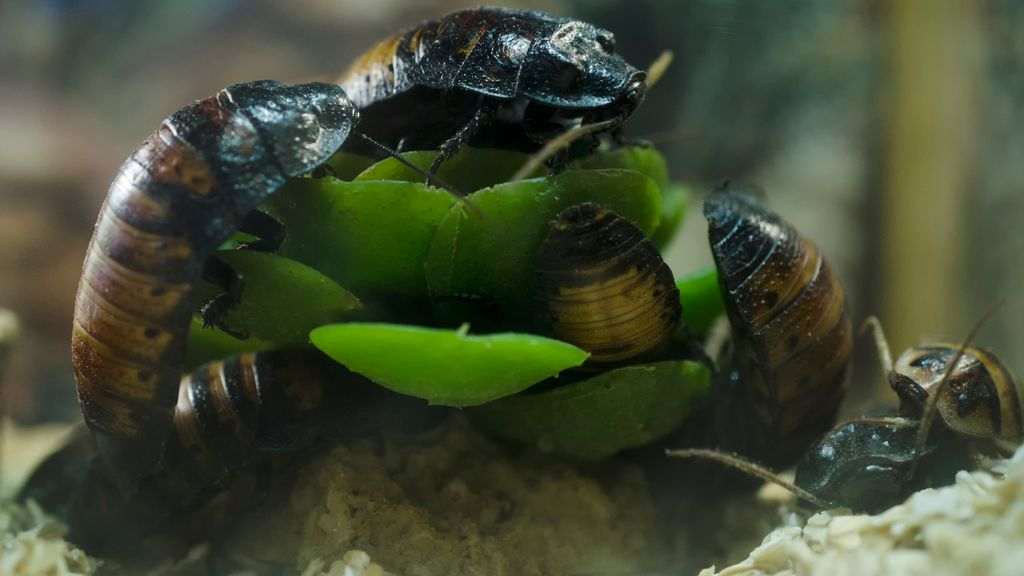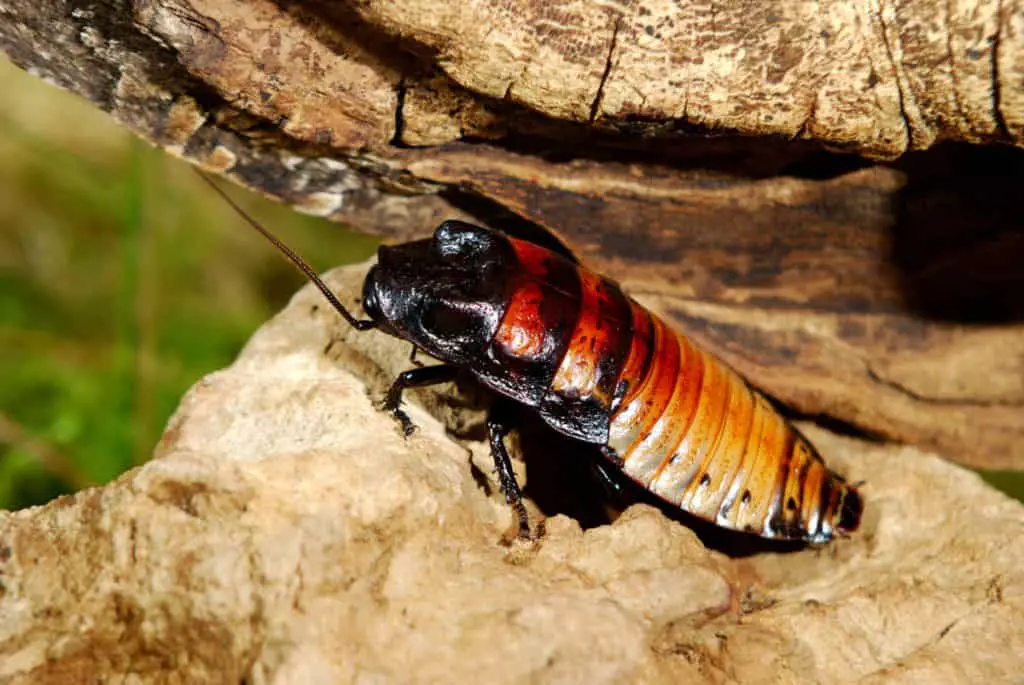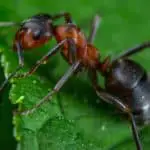Madagascar hissing cockroaches are some of the easiest and most fascinating insect pets to keep. If you’re interested in bringing these unique critters into your home but aren’t sure how to care for them, this guide will help you get started.
Basic Care at a Glance
- Housing: Small aquarium with carton papers for hiding spots.
- Diet: Fresh fruits and vegetables daily, with constant access to water.
- Environment: Maintain temperatures above 75°F (24°C) and keep the habitat moist by misting.
- Lifespan: With proper care, they can live for 2-4 years.
While taking care of Madagascar hissing cockroaches is straightforward, there are important details to understand to meet their needs fully. Let’s dive in!
Housing

You can house 3-4 Madagascar hissing cockroaches in a 5-gallon (20L) aquarium. Here’s how to set up their habitat:
- Substrate: Use a thin layer (0.5-1 inch) of coir as bedding.
- Hiding Spots: Add egg cartons or folded cardboard for them to crawl into. You can also use logs or branches for decoration and additional climbing surfaces.
- Escape Prevention: These roaches areexcellent climbers! Spread a 4-inch-wide layer of petroleum jelly (e.g., Vaseline) around the upper inner walls of the tank and secure a mesh lid with ventilation holes.
- Cleaning: Clean the enclosure monthly using mild soap. Replace the coir and carton papers during each cleaning.
Food and Water
Madagascar hissing cockroaches are not your average garbage-dwelling pests—they’re fussy eaters with specific dietary needs.
- What to Feed: Offer fresh fruits (like bananas or oranges) and vegetables (like carrots or cucumbers). You can also include dry cat or dog food for added nutrients.
- How to Feed: Provide food in a small dish and remove leftovers daily to prevent mold.
- Water: Use a shallow dish filled with water and add a sponge to prevent spills. Refill and clean the dish regularly.
Temperature, Humidity, and Lighting
Madagascar hissing cockroaches thrive in a warm, humid environment.
- Temperature: Maintain a range of 75-86°F (24-30°C). Use a heat mat or heat rock placed at one end of the tank to create a temperature gradient.
- Humidity: Mist the enclosure daily with a spray bottle to keep it moist.
- Lighting: These nocturnal creatures prefer darkness. Avoid placing their habitat in direct sunlight. Keep them in the dark when you are not observing or handling your roaches.

Handling the Roaches
These roaches are generally safe to handle, but there are some precautions to take:
- Be Gentle: Hold them by their thorax (the segment between their head and abdomen) to avoid being injured by the spines on their legs. Because of their sticky foot and hooks on their foot, sometimes the roaches may hold tightly onto something when you are trying to pick it up. When this happens, do not use force so that you do not injure them.
- Avoid Newly Molted Roaches: Newly molted roaches are white and vulnerable due to their soft exoskeleton.
- Watch for Allergies: Some people may be allergic to roaches, so observe for reactions like sneezing or rashes before handling them frequently.
- Wash Hands: Always wash your hands thoroughly after handling.
Breeding the Roaches
Breeding Madagascar hissing cockroaches is simple, all you need are both males and females adult roaches.
- Identifying Gender: Males have two prominent bumps (called tubercles) on their thorax as you can see in the photo below, while females’ bumps are smaller.
- Reproduction: Keep the temperature above 80°F (27°C) to encourage breeding. Females carry their eggs internally for 2 months before giving birth to your nymphs. Each litter contains 20-40 babies, and females can have up to three litters per year.
- Growth: Nymphs (baby roaches) molt six times before reaching adulthood in 6-8 months. They grow slower if the temperature is lower.

If you are in Florida, you may need a permit to breed the Madagascar hissing cockroaches. Always check with your local authority on whether a permit is required to breed them.
Common Issues
- Mites: You may notice small mites on your roaches. These mites are harmless and feed on mold. You can brush them off if you want to.
- Escape Risk: Always double-check the enclosure for gaps or poorly secured lids.
Recommended Supplies
Here’s my recommended shopping list to get you started with this hobby. Note that I get a small commission when you buy the items through the links in this page. This helps me to maintain the site without incurring additional costs to you.
I also recommend you to check out my recommended books to learn more about keeping roaches.
Final Thoughts
Madagascar hissing cockroaches are fascinating, low-maintenance pets perfect for beginners. With a proper setup and care, these critters can become a unique and educational addition to your home. Happy roach-keeping!


